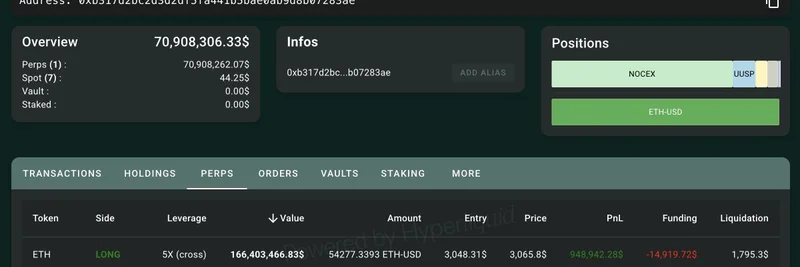In the fast-evolving world of blockchain, regulatory clarity is like finding a rare gem—it can unlock massive potential for builders and innovators. That's exactly what's happening with the U.S. Securities and Exchange Commission's (SEC) recent no-action letter to DoubleZero, a project that's pushing the boundaries of decentralized physical infrastructure networks, or DePIN for short. Jump Crypto, a key player in the space, just dropped a tweet highlighting this milestone, tying it back to the bigger picture of how blockchains are redefining organization through trustless systems.
Let's break it down step by step. If you're new to this, DePIN refers to networks that use blockchain tech to manage real-world physical infrastructure—like telecom, energy grids, or in DoubleZero's case, a global fiber-optic network—in a decentralized way. Instead of relying on big corporations, anyone can contribute hardware or resources and get rewarded with tokens. It's all about crowd-sourcing infrastructure without needing to trust a central authority.
The SEC's Game-Changing Move
On September 29, 2025, the SEC's Division of Corporation Finance issued its first-ever no-action letter specifically for a DePIN token, $2Z from DoubleZero. In simple terms, a no-action letter means the SEC won't recommend enforcement action if the project proceeds as described. This is huge because it confirms that DoubleZero's tokens aren't classified as securities under U.S. laws. As Cointelegraph reported, DoubleZero's general counsel emphasized that this "underscores that there is a path to launch a token" without running afoul of regulations.
The letter, detailed in the SEC's official response, addresses how tokens like $2Z are used for network incentives, value transfer, and security. It's a nod to the fact that when tokens are truly utility-based—rewarding participants for contributing to a physical network—they fall outside traditional securities oversight. Other sources, like Crypto.news, point out this could set a precedent for other DePIN projects, making it easier to attract long-term investments and build resilient systems.
Jump Crypto's Take: Trustless Coordination at Its Core
Jump Crypto isn't just cheering from the sidelines; they're deeply invested in this vision. In their tweet, they explain that blockchains go beyond finance—they're a new paradigm for organizing people. "Code and incentives let unaffiliated actors coordinate at scale," they say, emphasizing how this trustless setup creates open, resilient infrastructure.
They link to their blog post, "Organizing in the Trustless Era", written by Daniel Gerhardstein and published on September 30, 2025. The piece draws fascinating parallels between historical organizations—like medieval guilds and modern cooperatives—and today's blockchain networks. Guilds built trust through shared rules and reputation; cooperatives pooled resources for mutual benefit. But blockchains flip the script: participants don't need to know or trust each other because the protocol enforces everything transparently via code and crypto incentives.
DoubleZero gets a shoutout here as a prime example. They're building a permissionless fiber-optic network optimized for high-performance distributed systems, reducing latency and boosting bandwidth for blockchains. Independent contributors worldwide can join, earn rewards, and strengthen the network collectively. No legal contracts, just token economics and open-source code binding everyone together. Jump Crypto sees this as the future of "trustless industrial guilds," something impossible without crypto's coordination magic.
Jump also mentions their own projects, like Pyth (a decentralized oracle), Wormhole (blockchain interoperability), Firedancer (scaling Solana), and Shelby (decentralized storage). These are all powered by similar principles, showing how trustless organization fuels innovation across the ecosystem.
Why This Matters for Meme Tokens and Blockchain Practitioners
You might be wondering: how does this tie into meme tokens? Well, meme coins thrive on community-driven hype and coordination, often in decentralized ways. Regulatory clarity like this could inspire similar frameworks for meme projects, especially if they incorporate real utility—think community-owned infrastructure or incentive models. For blockchain practitioners, it's a green light to experiment with DePIN integrations, potentially blending fun, viral memes with practical, high-performance networks.
This development reduces uncertainty, encouraging more builders to commit to long-term projects. As ForkLog noted, DePIN tokens are now "fundamentally" outside SEC jurisdiction when structured properly, opening doors for global participation without the fear of legal hurdles.
Looking Ahead
The replies to Jump Crypto's tweet show the community's buzz—from questions about handling peak loads in DePIN to nods at node rewards and token liquidity. It's clear this is sparking real conversations about scalability and sustainability in trustless systems.
If you're diving into blockchain, keep an eye on DePIN projects like DoubleZero. With regulatory tailwinds like this SEC letter, we're entering an era where trustless organization isn't just a buzzword—it's the foundation for the next wave of crypto innovation. Stay tuned to Meme Insider for more updates on how these advancements intersect with meme culture and beyond.



